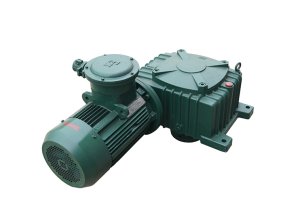The Impact of Mud Cooling in Modern Industries
In recent years, the application of mud cooling has garnered significant attention in various industrial processes. Mud cooling refers to the use of drilling mud, a mixture of water, clay, and other additives, to reduce temperatures in drilling operations, particularly in the oil and gas sector. This technique is instrumental in enhancing efficiency, protecting equipment, and ensuring safety within high-temperature environments.
One of the primary advantages of mud cooling lies in its ability to effectively manage heat generation during drilling operations. When drilling deep into the Earth, the temperature can rise drastically due to the geothermal gradient and the friction generated by drill bits. Excessive heat can lead to equipment failure, increased wear and tear, and even hazardous situations for workers. By circulating mud through the drill pipe, the temperature can be maintained at manageable levels. The mud absorbs the heat, transferring it away from the drill bit and other components, thereby preventing overheating.
Moreover, mud cooling serves a dual purpose it not only cools but also lubricates the drilling equipment, which reduces friction and enhances performance. This lubrication is critical, as it minimizes the risk of damaging the drill bit and other components. As a result, drilling operations can proceed more smoothly, with less downtime and lower maintenance costs. The combination of cooling and lubrication provided by mud is essential for extending the lifespan of drilling equipment, thereby improving overall operational efficiency.
Aside from its mechanical benefits, mud cooling also plays a critical role in ensuring safety during drilling operations. In high-temperature settings, the risk of fires or explosions increases significantly. By maintaining a low temperature in the drilling area, mud cooling helps mitigate these risks. Furthermore, the use of drilling mud can contain potential blowouts by providing a stable hydrostatic pressure in the wellbore, thus reducing the likelihood of uncontrolled releases of hydrocarbons. Safety is paramount in the oil and gas industry, and mud cooling is a vital practice that supports rigorous safety protocols.
mud cooling
In addition to traditional drilling operations, mud cooling is making waves in geothermal energy production. As the demand for renewable energy sources grows, geothermal energy has emerged as a viable and sustainable option. Similar to oil and gas drilling, geothermal wells require effective temperature management to optimize heat extraction. By utilizing mud cooling techniques, operators can obtain higher temperatures from the geothermal reservoirs while safeguarding their equipment and ensuring compliance with safety standards.
Research and technological advancements have further enhanced the effectiveness of mud cooling. The formulation of drilling mud has evolved, with the introduction of various additives that improve its thermal properties and cooling capabilities. Innovations in mud composition allow for better heat absorption, which can lead to increased efficiency and reduced operational costs. Additionally, real-time monitoring systems enable operators to track temperature fluctuations more accurately, allowing for swift adjustments to the cooling process.
However, while the benefits of mud cooling are substantial, there are also challenges associated with its implementation. The disposal of used drilling mud can pose environmental concerns, as it may contain contaminants and additives that can be harmful. Therefore, it is essential to develop sustainable practices for mud disposal and recycling. Furthermore, ongoing training and education for personnel involved in drilling operations are crucial to ensure that mud cooling techniques are applied effectively and safely.
In conclusion, mud cooling represents a critical advancement in modern industrial practices, particularly in the oil and gas sector and geothermal energy production. Its ability to regulate temperature, reduce friction, and enhance safety makes it an indispensable component of drilling operations. As technology continues to improve and sustainability becomes a focal point in industry practices, the future of mud cooling looks promising. Emphasizing research, training, and innovative practices will ensure that the advantages of mud cooling can be leveraged effectively while addressing the environmental and operational challenges it may present.
 Linear Motion Shale Shaker In Drilling Rig
Linear Motion Shale Shaker In Drilling Rig  Oilfield Mud Cleaner
Oilfield Mud Cleaner  Drilling Fluid Decanter Centrifuge
Drilling Fluid Decanter Centrifuge  Drilling Mud Desander
Drilling Mud Desander  Hydrocyclone Desilter
Hydrocyclone Desilter  Centrifugal Pump/Centrifugal Mud Pump
Centrifugal Pump/Centrifugal Mud Pump  Shear Pump
Shear Pump  Jet Mud Mixer
Jet Mud Mixer  Horizontal Mud Agitator
Horizontal Mud Agitator  Constant Pressure Drilling Fluid Mud Gas Separator
Constant Pressure Drilling Fluid Mud Gas Separator  Mud Gun
Mud Gun  Mud Tank
Mud Tank  Solids Control System Vacuum Degasser
Solids Control System Vacuum Degasser  Flare Ignition Device
Flare Ignition Device  Diesel Tank
Diesel Tank  Submersible Slurry Pump
Submersible Slurry Pump 





































